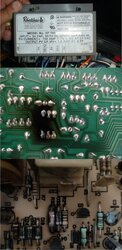I have a Superior Fireplace and it is not igniting. When I turn on the wall switch I hear a loud click, symbolizing I assume , the main gas switch firing the pilot flame gas but there is no clicking from the igniter. At one point the igniter would click loud once then be followed by three of four more subdued clicks. Now I don't even get a single click. Could this be the igniter or the switch assembly it is attached to underneath? Is there a way to test the igniter?
TIA
TIA


